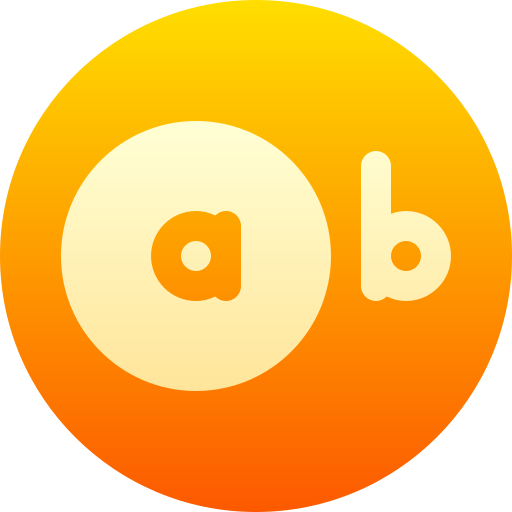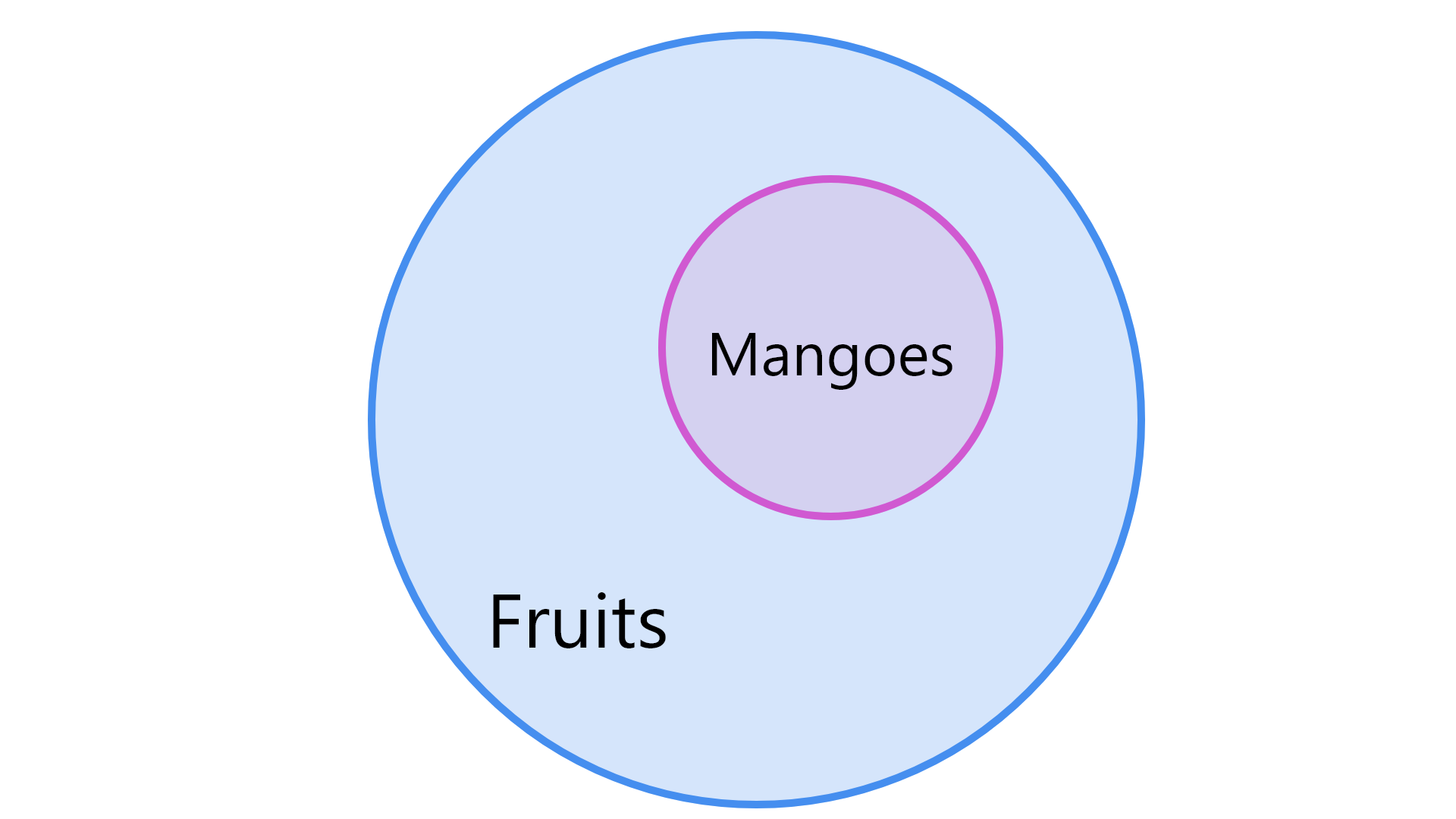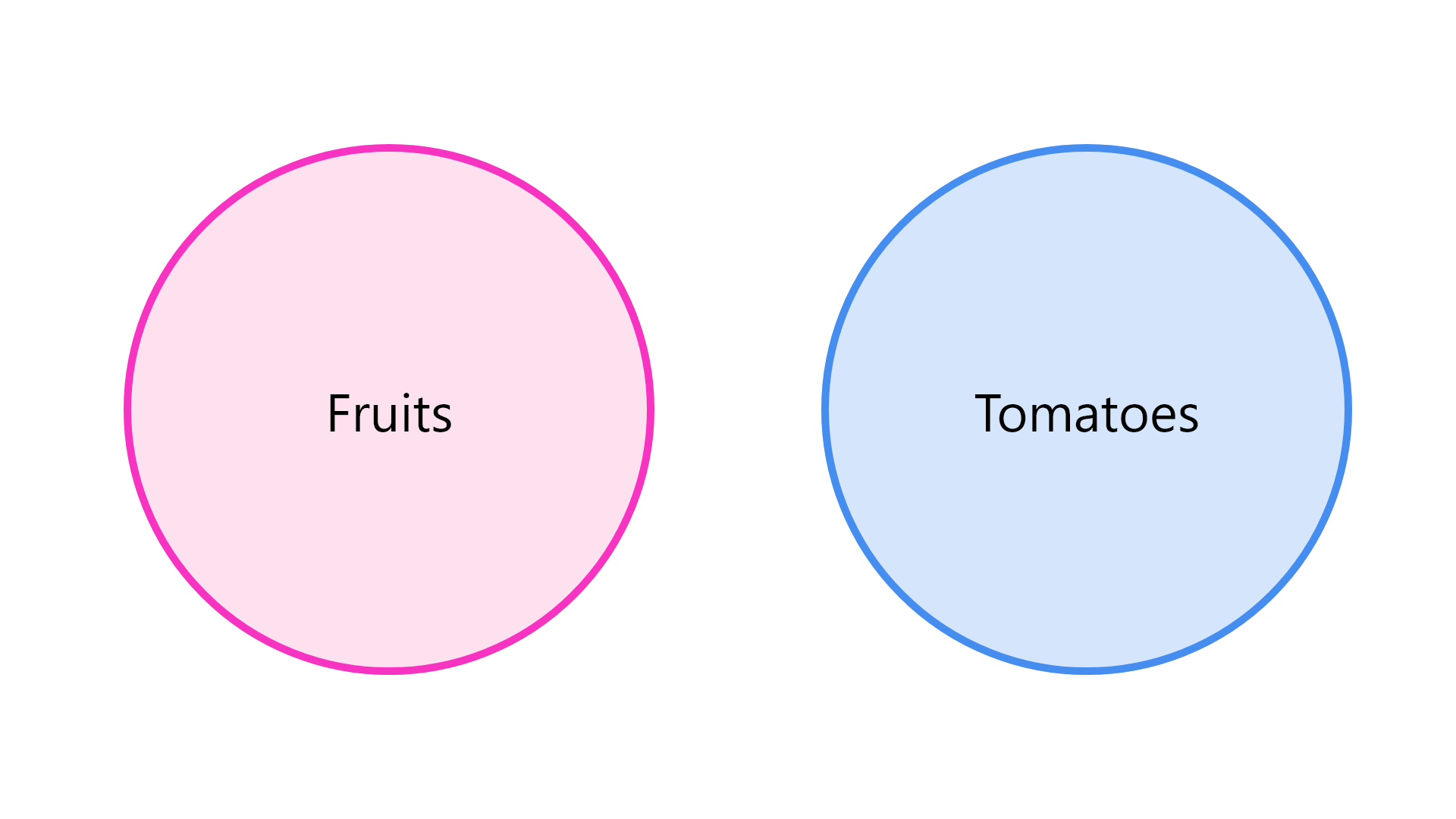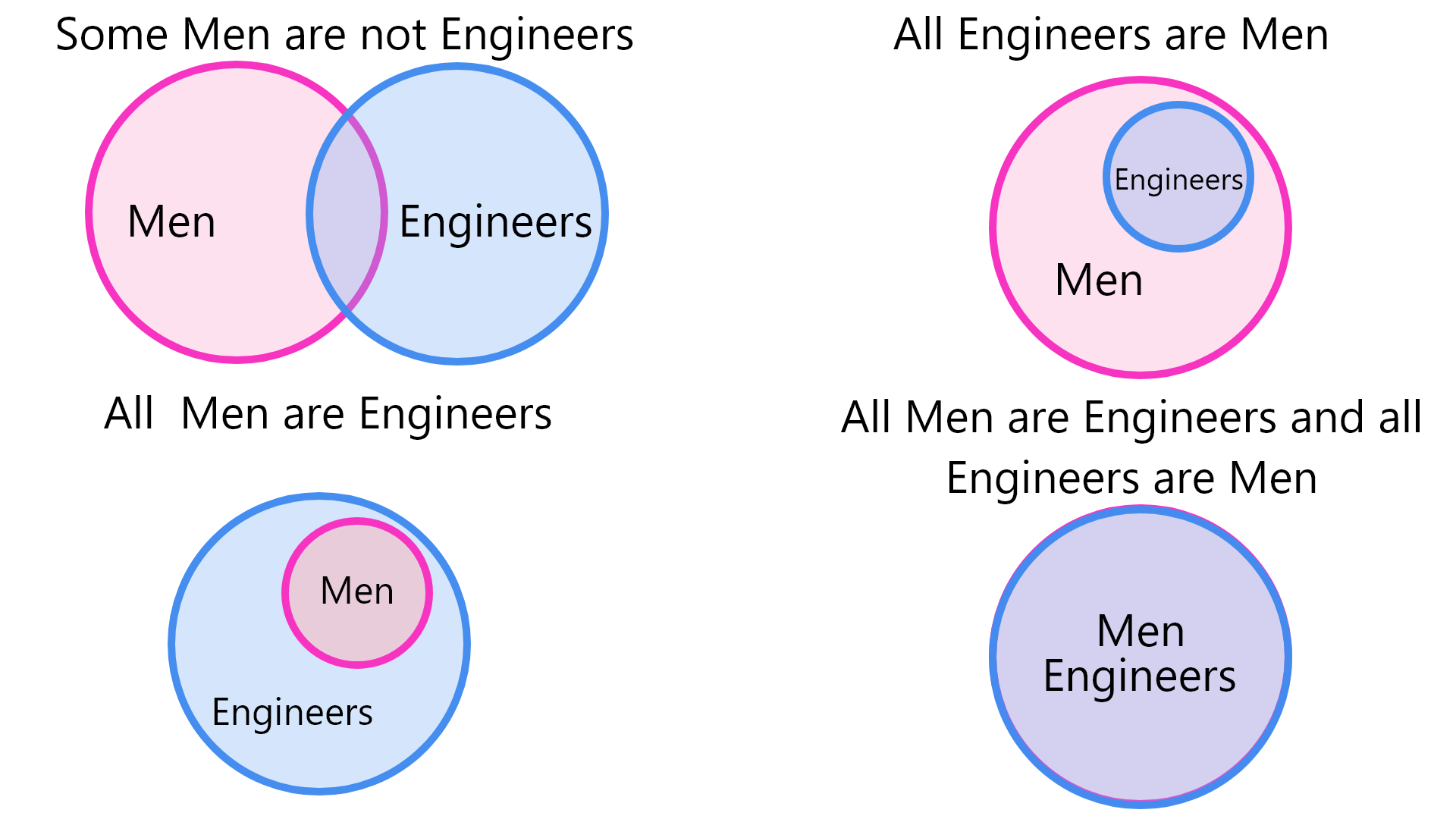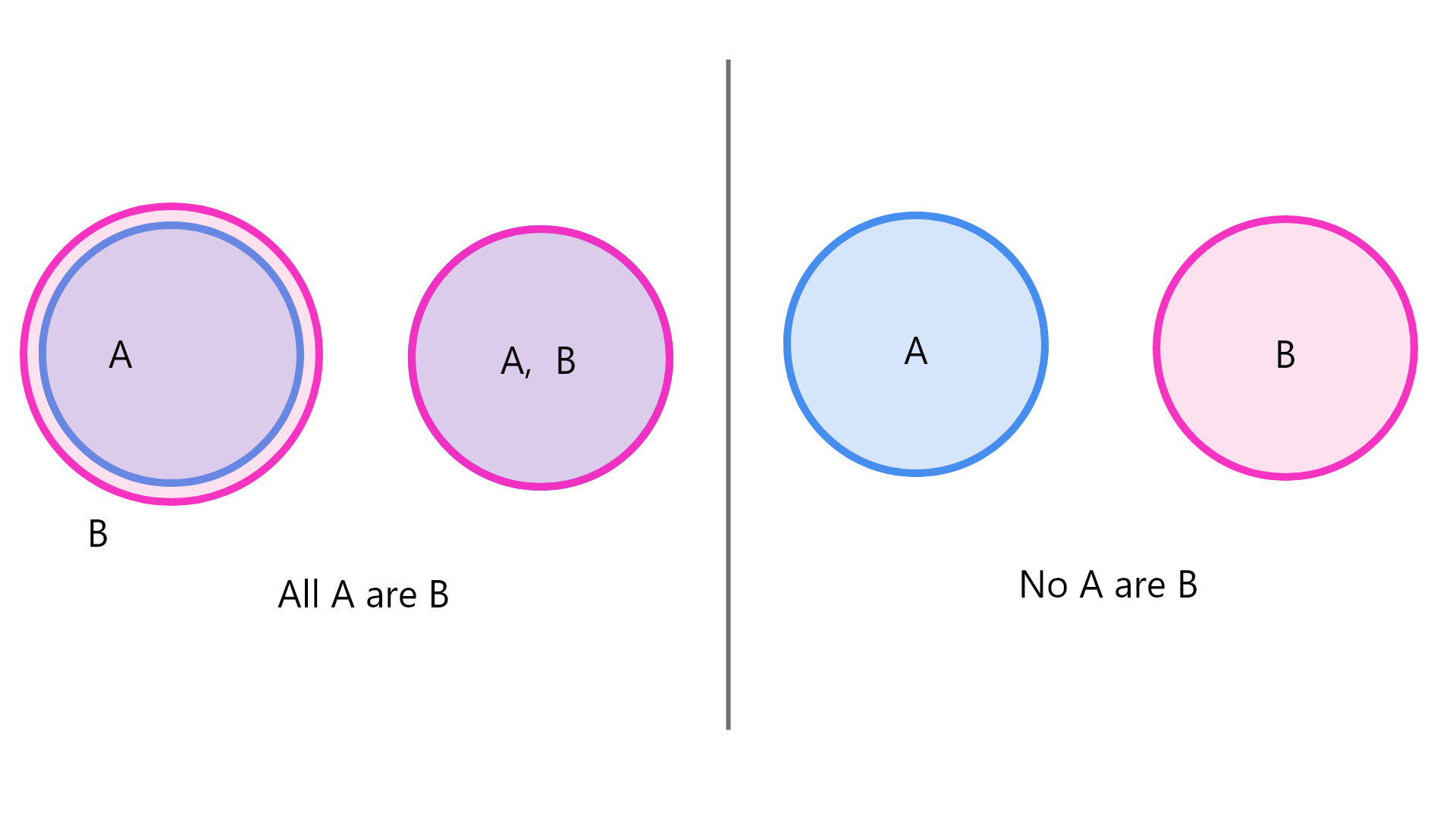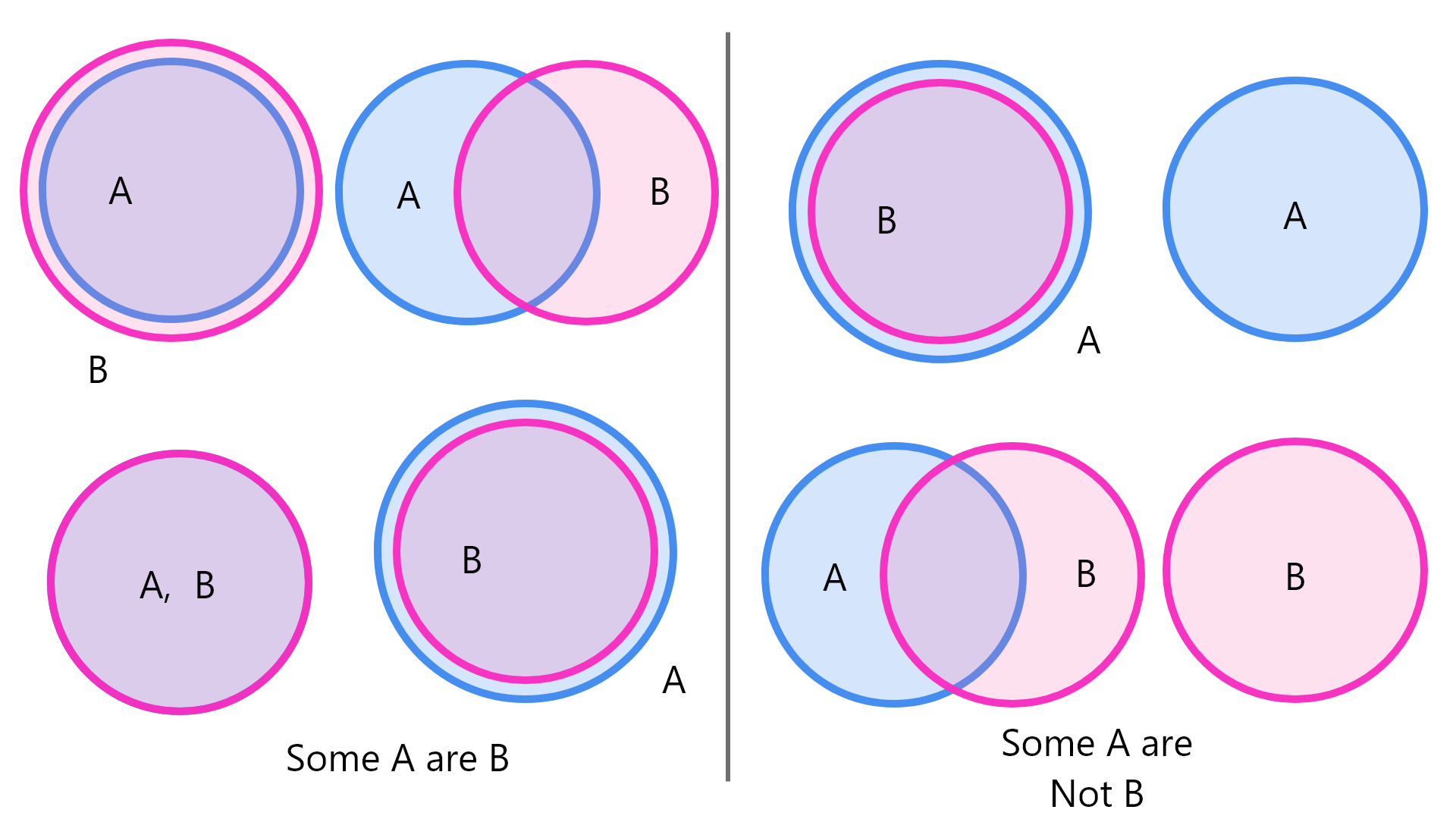The most easier way to solve syllogism questions is using the help of the Venn diagrams.
All we have to do is, read the given statements and accordingly draw the Diagram step by step, by the given statements, and eventually derive a logical solution with the help of the final diagram.
Examples :
1) Statement:
1. No pen is book.
2. No scales are pens.
Conclusion:
1. All scales are book
2. Some scale is pen.
Options:
A. The only Conclusion I follows
B. Only Conclusion II follows
C. Either conclusion I or Conclusion II follows
D. Neither conclusion I nor Conclusion II follows
Solution:

There are 3 possible cases.
Since “ No pen is book” The diagram of pen and book do not have any overlapping. Hence, they are apart. According to the second statement, since no scales are pens, the diagrams of scales and pen do not overlap.
Case 1: If no scales are pen, one possibility is there can be no scales which is book also.
Case 2: There can be scales which is also bool. Hence a part of scales and book overlap with each other.
Case 3: All coats can be a scales, as there is no statement which says this combination is not possible.
Therefore option D is the correct one.
Correct option: D
2.Statement:
1. Some Jhon is Jill.
2. Some Matheu is Jhon.
Conclusion:
1. Some Jill is Matheu
2. No Jill is Matheu
Options:
A. The only Conclusion I follows
B. Only Conclusion II follows
C. Either conclusion I or Conclusion II follows
D. Neither conclusion I nor Conclusion II follows
Solution:
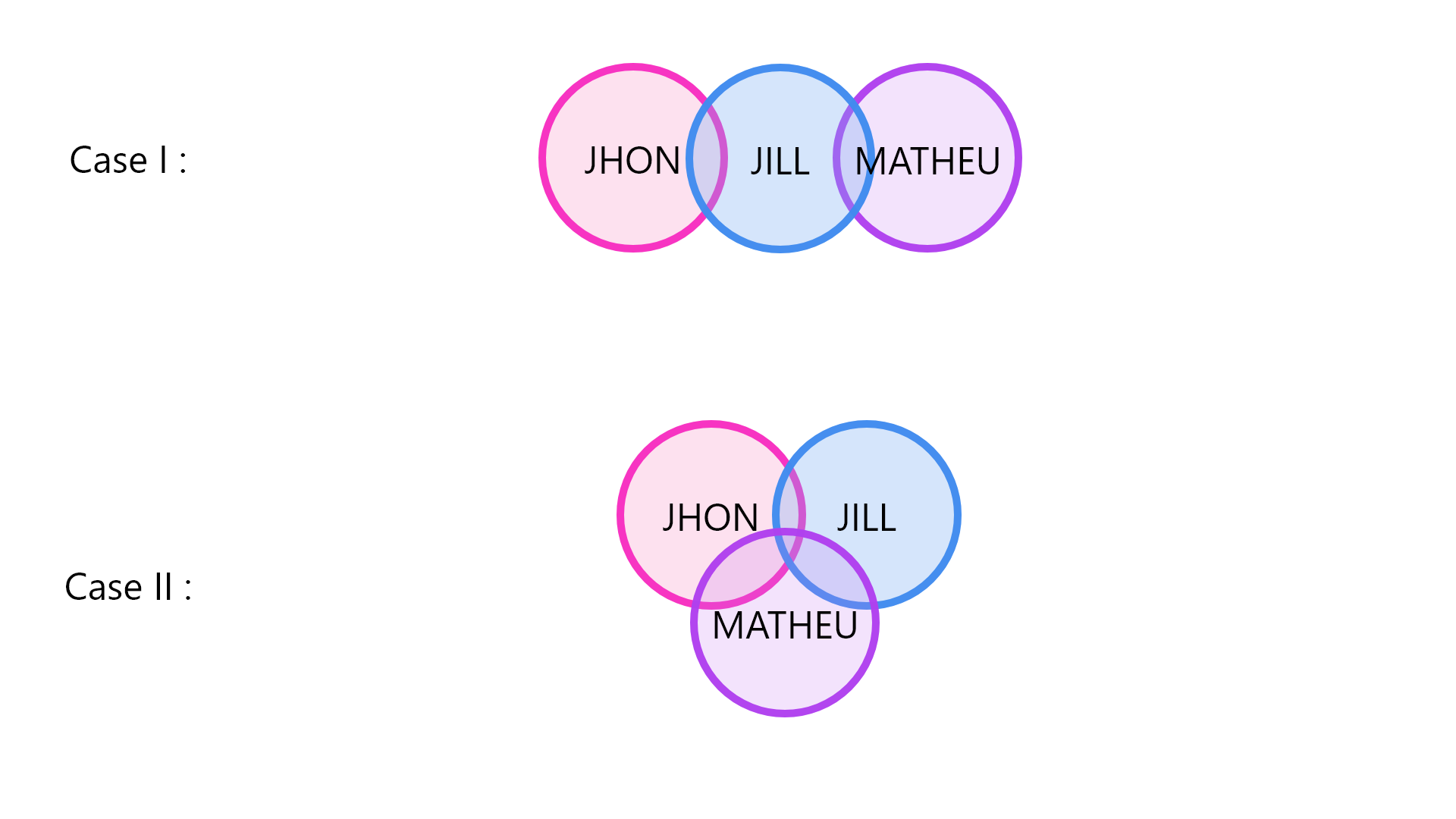
By looking at the above diagram, it is evident that either conclusion I or conclusion II follow since the conclusion is forming a complementary pair.
Hence option C is the correct one.
Correct option: C
3.Statement:
1. All men are strong.
2. Anil is a man.
Conclusion:
1. Anil is strong
2. Anil is not strong.
Options:
A. The only Conclusion I follows
B. Only Conclusion II follows
C. Either conclusion I or Conclusion II follows
D. Neither conclusion I nor Conclusion II follows
Solution:
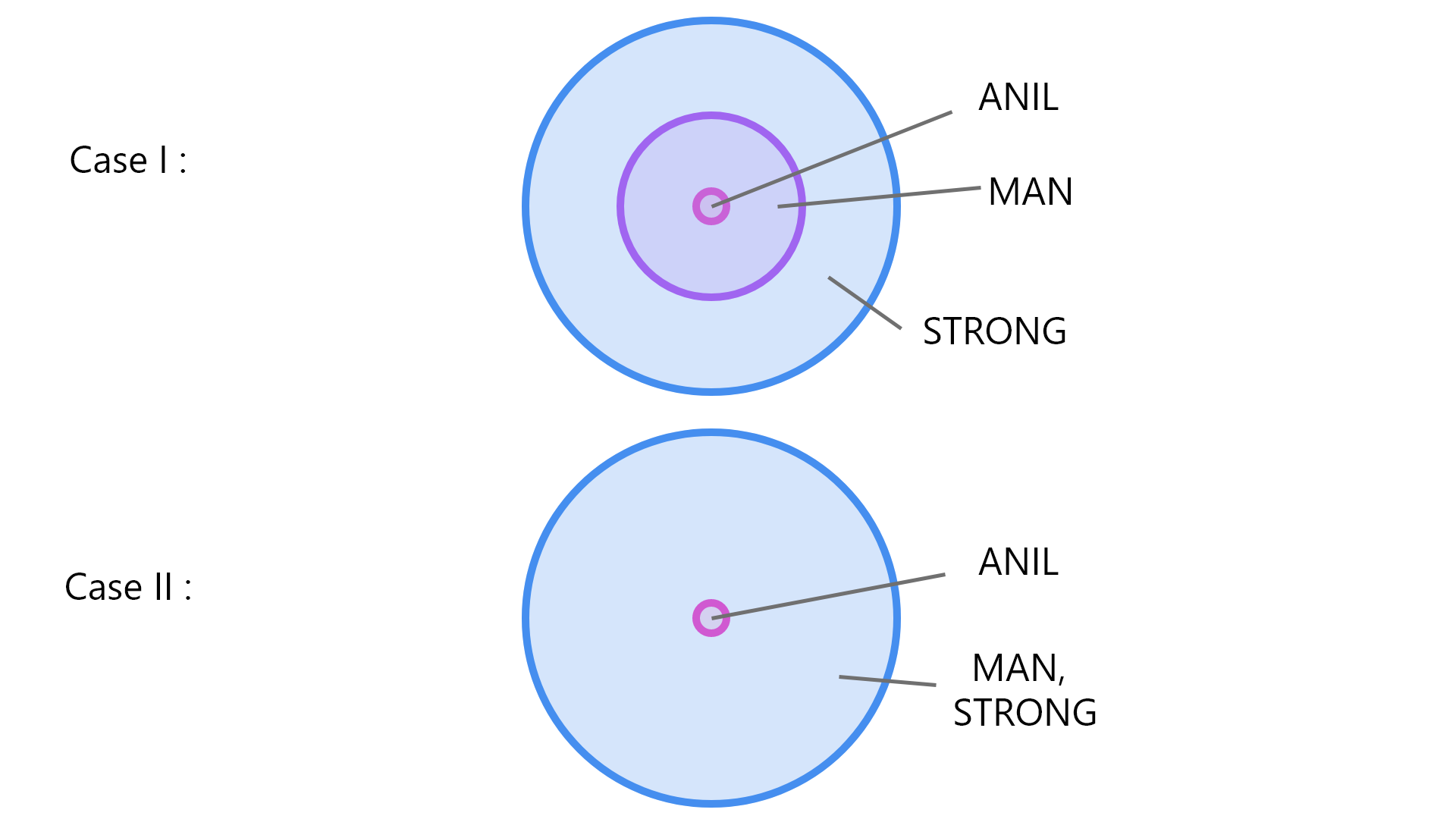
In the first case, the statement “ All men are strong “ the Venn diagram of men is inside the Venn diagram of strong. In the second statement, since Anil is a man, the Venn diagram representing Anil should be inside man. In the second case, the only difference is, the first statement “ All men are strong “ the Venn diagrams of men and strong are overlapping with each other. Because that’s another possibility. Since Anil is men, it is represented inside it. Observing both the cases, we can agree that the conclusion given “ Anil is strong “ is true from both the case.
Hence, Correct option is A
Correct Option: A
